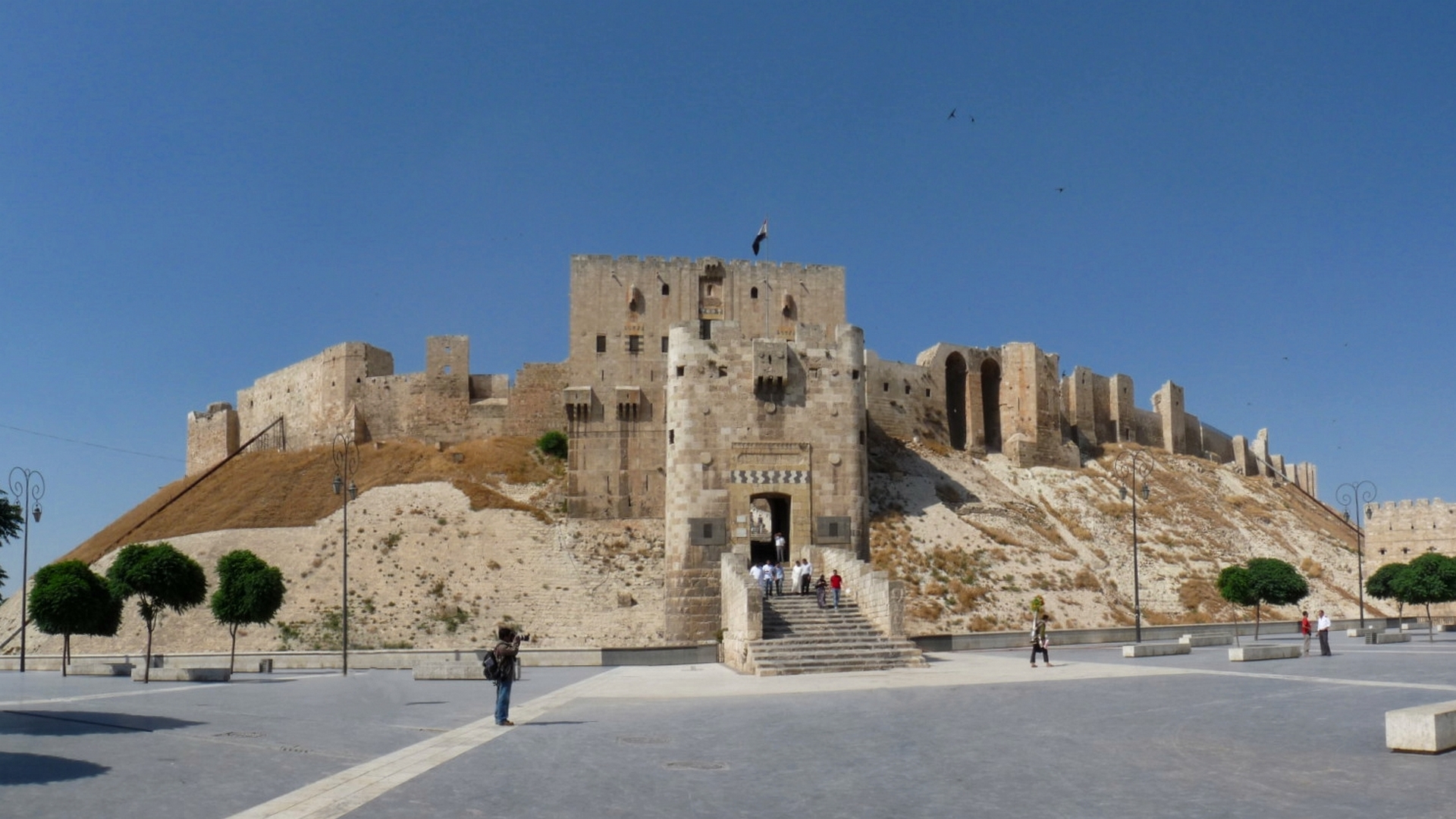Description
Property Name: Citadel of Aleppo
Inventory No: 963-21-4
Date of infill of the inventory form: 2008-03-14
Country (State party): Syria
Province: Aleppo
Town:
Geographic coordinates: 36° 11′ 58.21″ N
37° 9′ 46.49″ E
Historic Period:
Year of Construction: 13th century
Style:
Original Use: Fortress
Current Use: Archeological park
Architect: Unknown
Significance
The prehistoric tell at Aleppo was fortified throughout the Muslim period. Established in its present form in 1209, it changed little in the restorations of 1292, though the intricate stone inlay decoration is of this later date. The barbican is preceded by a bridge across the moat, its outer end guarded by a gate and outwork erected in 1211 (repaired in 1507). These robust structures, replete with machico¬lations, panels of decoration, and inscriptions, are one of the most impressive of all Arab military works in Syria.
Selection Criteria
v. to be an outstanding example of a traditional human settlement, land-use, or sea-use which is representative of a culture (or cultures), or human interaction with the environment especially when it has become vulnerable under the impact of irreversible change
vi. to be directly or tangibly associated with events or living traditions, with ideas, or with beliefs, with artistic and literary works of outstanding universal significance
State of Preservation
All of the internal structures are in ruins, however, the minaret of the mosque is intact.
The Citadel suffered many damages as a result of the war individual structures within the Citadel are heavily damaged, given the site’s scale, the overall damage is categorized as moderate.
UNITAR-UNOSAT identified a total of 31 affected historic buildings/areas, including 3 modern buildings, of which 1 is destroyed, 3 are severely damaged, 21 are moderately damaged, and 6 have sustained possible damage as of 20 January 2017. However, within this assessment, and although the overall damage to the walls is less than 40 percent and so classed as moderate, the towers and walls around them in two locations have been destroyed and several of the towers have sustained heavy damage (Kasmo, 2018).
References
Michell, George. Architecture of the Islamic World: Its History and Social Meaning. Thames and Hudson, London, 1978.
Kasmo, Ruba. FIVE YEARS OF CONFLICT: The State of Cultural Heritage in the Ancient City of Aleppo, United Nations Educational, Scientific and Cultural Organization, 7, UNESCO / UNITAR, 2018.
Michell, George. Architecture of the Islamic World: Its History and Social Meaning. Thames and Hudson, London, 1978.
Kuran, Aptullah. Sinan: The Grand Old Master Of Ottoman Architecture, Institute of Turkish Studies, Inc., Washington D.C. ; Ada Press Publishers, Istanbul, 1987.
Necipoğlu, Gülru. The Age of Sinan, Reaktion Books Ltd, London, 2005.
Kuran, Aptullah (ed). Mimarbaşı Koca Sinan Yaşadığı Çağ ve Eserleri (2 Volumes), Başbakanlık Vakıflar Genel Müd ürlüğü, Istanbul, 1988.
Burelli, Auguto Romano. La Moschea di Sinan, CLUVA Editrice, Venice, 1988.
Aslanapa, Oktay. Mimar Sinan’ın Hayatı Ve Eserleri, Kültür Bakanlığı, Ankara, 1992.
Parisi, Nicola. Design And Construction Of The Ottoman Domed Space, Poliba pres, Bari; Aracne, Rome; 2008.


